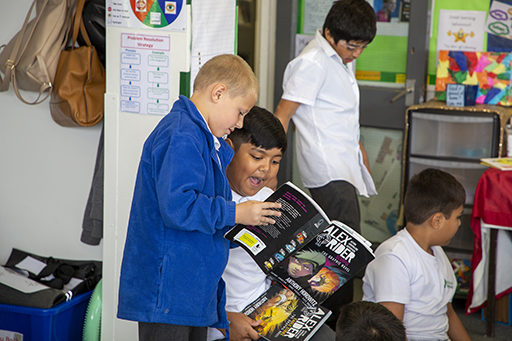7 Reader motivation
Motivation is key in developing volitional readers, that is, readers who read of their own free will. Many reading programmes, online and off, seek to foster recreational reading through an incentive-based system such as reading a certain number of books to gain stickers or stars. Although such programmes have a role, studies of extrinsic motivation indicate it can have a limiting effect on readers. If teachers place high emphasis on a fluent reading performance, on grades, competitions and material rewards, children are less keen to read (Orkin et al., 2018). Teachers should instead help children connect to each other as readers, engage affectively in the text and find pleasure in reading for themselves, not in order to please their teachers or parents, or to conform to the expectations of the school system. If children find pleasure in reading, they will gain all the benefits of being a childhood reader.

In Session 1, you read that readers who are intrinsically motivated are more likely to be reading for their own pleasure and satisfaction and to have a positive self-identity as a reader (McGeown et al., 2012). Becoming an engaged and motivated reader has personal, social, emotional and cultural dimensions. It involves the reader seeing a purpose for reading. Texts that interest, engage and challenge young readers are seen to be intrinsically motivating. Another key motivating factor is the actual experience of reading itself (Ross et al., 2006) and the child’s personal affective engagement in the text, as you saw in the case study of Ishmael in the previous section. Affect drives reader’s engagement; their emotional response to the text is very influential.
Children are also motivated by many kinds of texts, including digital ones, and value the opportunity to personalise such texts and the interactivity involved. Many readers are also socially motivated, they want to connect and belong. In the next section, you will look at how building reader networks, relationships and communities supports children’s desire to read.
